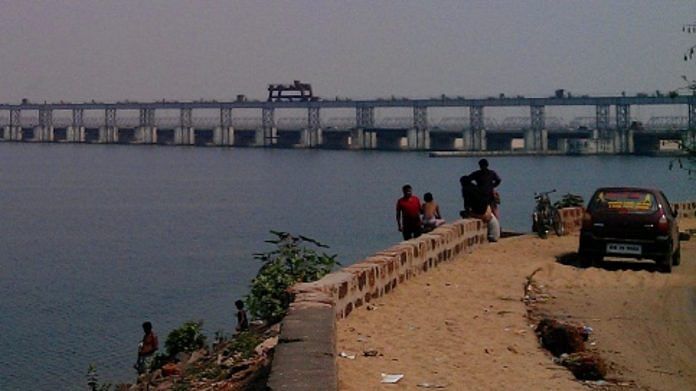
Thank you dear subscribers, we are overwhelmed with your response.
Your Turn is a unique section from ThePrint featuring points of view from its subscribers. If you are a subscriber, have a point of view, please send it to us. If not, do subscribe here: https://theprint.in/
It is important to understand that gender vulnerabilities emanating from climate change, stems from prevailing gender inequalities. Climate change is known to amplify existing gender inequalities, putting at risk women’s livelihoods and health. Women have thus, come to face greater risks, bearing the bigger burden of climate change impacts, in comparison to their male counterparts.
This piece seeks to analyze the situation in the Mahanadi Delta that has fallen prey to climate change, as agricultural communities in the deltaic region struggle for survival after being affected by the joint forces of recurring floods, salinization and cyclones. It makes for a compelling case study, as it goes on to reflect why and how empowering women by transforming power relations and gender roles within the deltaic region’s patriarchal society, could make them more adaptive to the climate change’s devastating impacts.
Recurring crop losses, and insufficient income from the practice of agriculture, has forced the residents of the deltaic region to look elsewhere for employment opportunities. In fact, its male migrants outnumber women migrants by a large margin. Female out-migration is rather, a rare phenomenon, and make up for an invisible category within India’s ever growing population of climate migrants.
Labour migration in the Mahanadi Delta remains largely male-dominated, while women usually stay behind to perform household chores and look after the family’s needs. Most of its households are dependent on the remittances sent back by the male members of the family for their sustenance. It goes on to show how the gender division of labour remains deeply entrenched, and shape women’s relationships with nature in the backdrop of the ongoing climate change.
Male migrants from the Mahanadi Delta mostly take up work in the construction industry in other states, especially states in the South like Tamil Nadu and Karnataka. A few even travel to Middle Eastern countries like Qatar and Saudi Arabia for better paying opportunities in the construction sector. It would however be interesting to note that, as per a study
conducted by the University of Southampton on the Mahanadi Delta, a large portion of the womenfolk physically carry raw materials like cement and bricks for construction.
As per reports, the construction sector is the second largest in India, after its agricultural sector. It plays a very significant role in shaping the Indian economy. Though traditionally a male-dominated industry,
women have formed the backbone of the construction sector– an army of ‘invisible women’ form a large portion of India’s construction labour pool till present day.
Though when it comes to the instances of out-migration, most of the womenfolk, if not all, stay back in the deltaic region, while the menfolk move to distant places in the lookout for paid construction work. If this is to be remedied, a number of structural changes have to be brought forth within the construction industry itself. It is imperative that construction companies acknowledge this prevailing gender bias in the first place, and then work towards weeding out any inequalities by taking up measures such as recruiting more women, developing training programs for them and so on.
Rather, migratory trends reveal that female migrants, though a handful, resort to intra-migration as opposed to inter-migration by their male counterparts. They work in small-scale industries, and usually work as teachers and health workers. Only women who possess higher and secondary levels of education, are seen to move, as opposed to those who have completed their primary level of education. They remain back to manage the household, while their menfolk move to the other states. Thus, it can be seen that education remains a primary determinant when it comes to gender-sensitive adaptations within this deltaic environment.
The female migrants thus, perform gendered jobs, found to be clearly rooted in stereotypes, such as teachers and healthcare workers, traditionally associated with the female sex, as seen throughout the course of history. This shows how women and men differ in terms of their responses to the impacts of climate change (acting as the push factors of migration in this regard), in the backdrop of the prevailing sex discrimination found to be deep-rooted in the division of labour existing within a patriarchal society. Like every patriarchal society, women in the deltaic region remain confined to performing domestic chores, while men take up employment opportunities outside the state. This simply leads to the reinforcement of their economic dependency, paving the way for gender inequalities.
These pieces are being published as they have been received – they have not been edited/fact-checked by ThePrint.

COMMENTS